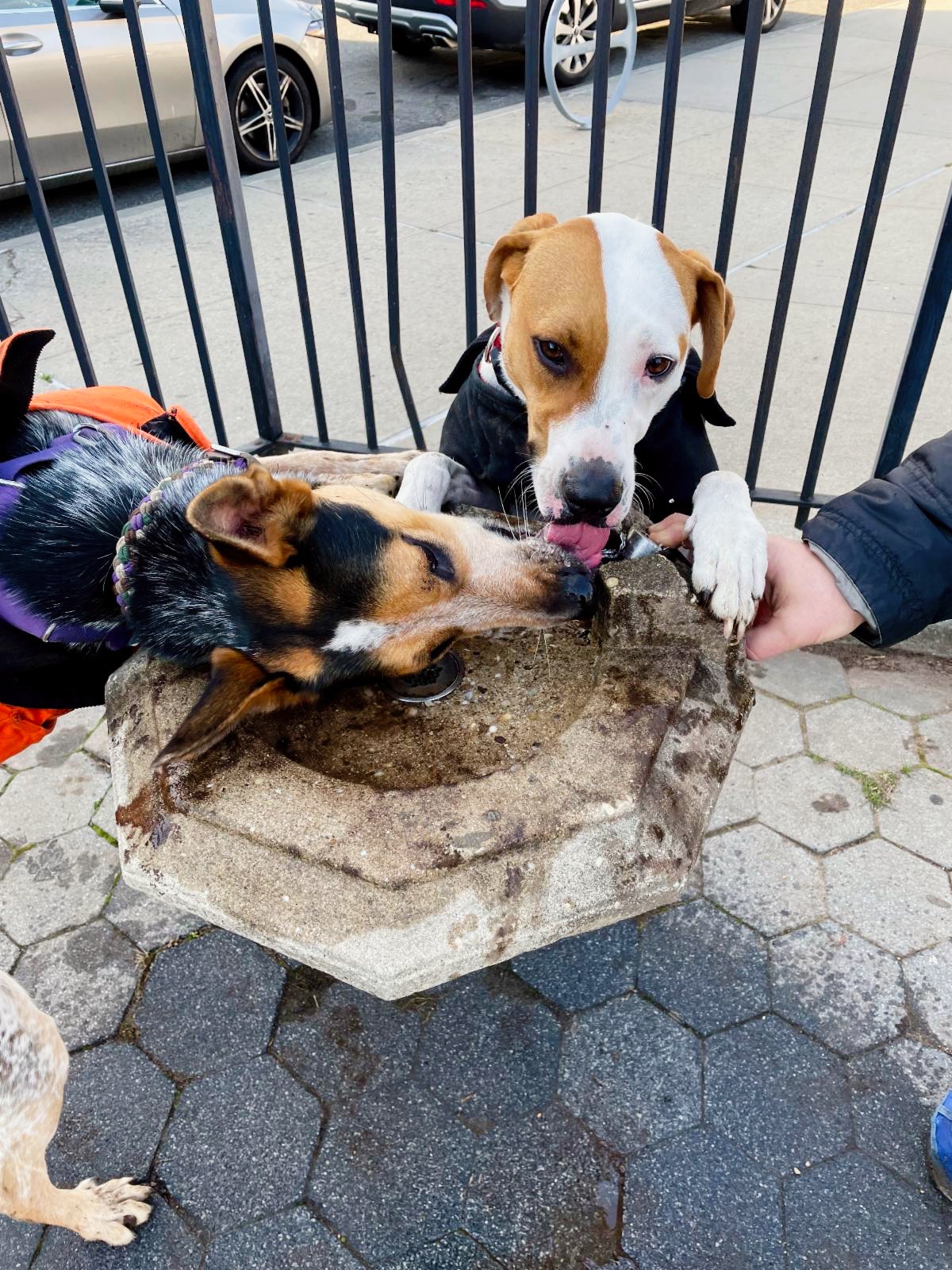Unfortunately, the situation has risen to an operatic pitch.
It’s become an almost Shakespearean saga of passion, intrigue and revenge, complete with heroes and villains.
I’m talking, of course, about the drama around the baseball field and the puppy community.
Last Saturday morning a Parks Department Ranger––think someone straight out of central casting if you’d requested “Very Grumpy Old Man”––arrived at 8:15 am and kicked everyone off the field.
Until then, one entrance had a combination lock which everyone in the dog and the late night Volley Ball communities knew.
The Ranger added an additional padlock on each of the six entrances.
That night––in a spirit of idiotic revenge––apparently someone superglued them all shut, I suppose miscalculating that would mean that the authorities would simply give up.
They did not.
The next morning, Vlad and I stumbled into several conversations in the mini-park about purchasing bolt cutters and plans to come back before dawn to commit what I assume must be at least a misdemeanor.
I’m not sure which of my cohorts did the deed––and we’ll see how long it lasts––but two days later, with the chains cut through, the dogs were on the field once again.
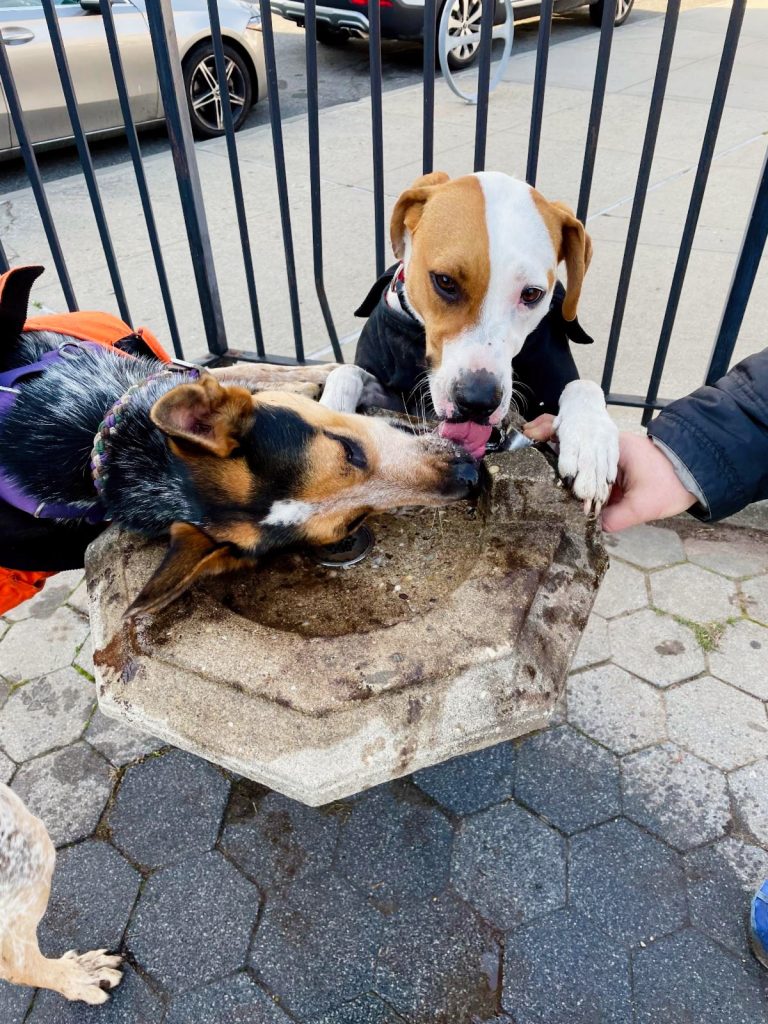
Vlad and Moon share a Post-Fetch Water Break (pic via Moon’s Dad)
Since this is the last week I’ll be writing specifically about resilience––this month’s meditation is HERE––I was struck how much this exemplifies many aspects of that virtue––albeit with added layers of civil disobedience and outright vandalism.
Please allow me to elaborate.
One of the key things that all resilience research reveals is that resilience is something that can be developed.
The last few decades have revolutionized our concepts of brain plasticity, of its ability to grow, change, and rewire neural networks.
In fact, without neuroplasticity, we wouldn’t be able to develop into adults, much less recover from brain injuries.
We’ve even reached a point in neuroscience where we can measure resilience with MRIs.
One recent study, for example, proved that:
“The more white matter (axons connecting neurons) lying between the prefrontal cortex and the amygdala, the more resilient you are.”
Rather than rushing off to get your brain scanned––although you certainly can if you want––what’s perhaps much more useful is knowing just how we can most effectively increase that white matter…
In other words, how exactly do we best develop resistance, that elusive but all-important ability to spring back from life’s challenges and crises?
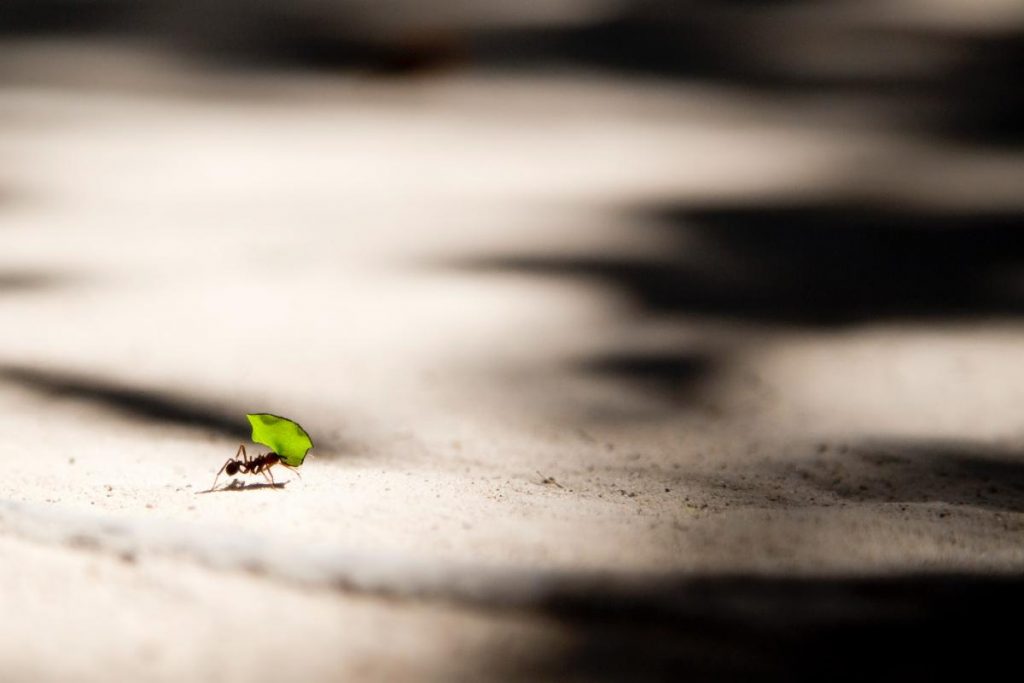
To be honest, I’ve also faced some more serious resilience challenges this week.
I found this article in Psychology Today HERE helpful as it described grief as “the most painful emotion that any human can ever experience.”
You see, this week, after having had a stroke in late October, my dear friend Jane, a former neighbor and always one of my very favorite people in the world, passed away.
Jane was quite a character but she was also very private.
I’d like to respect that yet still share two telling details.
Jane was incredibly stylish, beyond immaculate in her appearance and in all her fashion and decor choices.
As an example…
I saw her right after her stroke when she was in the ICU.
Before transferring to the rehab facility, however, her health proxy apologetically told me that Jane said I could visit againbutinsisted it could be only after they scheduled someone from her favorite hair salon to visit first.
You had to respect that stalwart self-determination, even in crisis.
(Indeed, I wholeheartedly concur with the great Diana Vreeland‘s remark:
“I loathe narcissism,
but I approve of vanity.”)
Anyway, Jane’s apartment was pretty much all-white, always full of blooming orchids.
Although I appear to have inherited my grandmother’s green thumb––stories about my tree HERE and HERE bear this out––I’ve never tended to orchids.
Nonetheless, in Jane’s memory, I ordered a magnificent one that arrived today.
More about that in a moment…

Many of the ways we can develop resilience could be dismissed as generic examples of positive––even Pollyanna-ish––thinking.
Yet scientific study after study proves that these practices make a vital difference in how our brains rewire and strengthen themselves.
Things like…
• Accepting Change
• Taking Action / Working Towards Goals (even with just baby steps)
• Self-Care
• Maintaining Perspective during Times of Crisis, and
• Nurturing a Positive, Hopeful Attitude.
The list goals on but near the top of every one I’ve read is also
• Staying Connected.
The truly resilient––and those who are training themselves to be––tend to have good relationships with family members or close friends.
The most resilient folks know how to accept support from others.
And, of equal importance, they know how to give support as well.
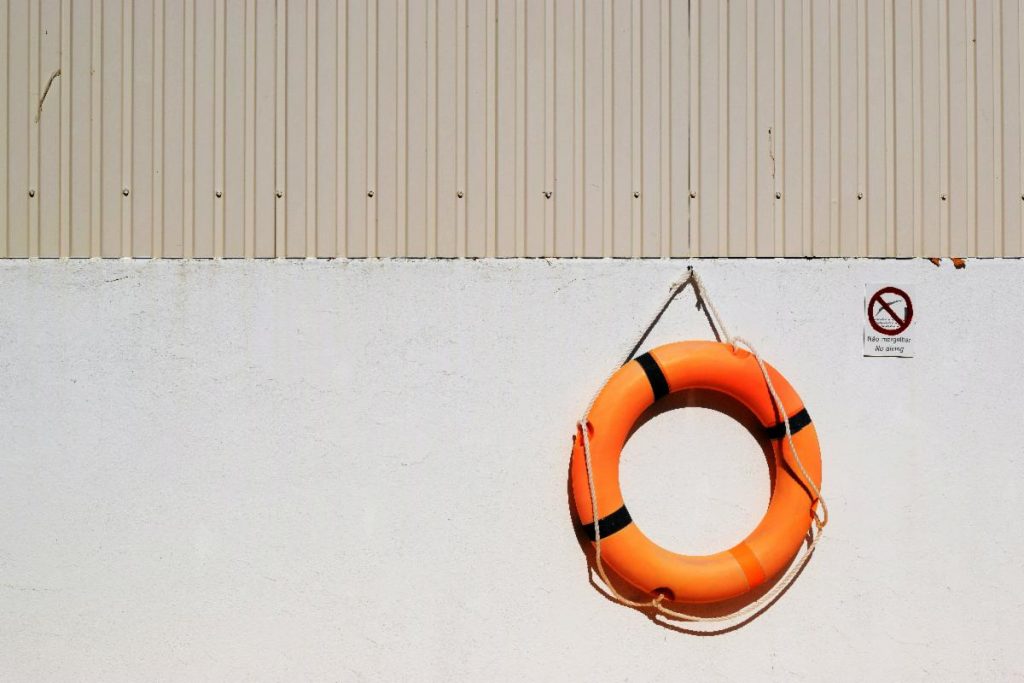
Indeed, “There is a lot of evidence that one of the best anti-anxiety medications available is generosity,” Adam Grant, an organizational psychologist at Wharton, told The New York Times.
The Times article HERE describes numerous studies where researchers found that helping others––whether it was middle-school students mentoring younger kids or overweight people helping others with weight loss––had profound effects on both parties.
It’s a rather beautiful modern discovery that doing things only for good karma also results in greater neural plasticity.
I’ve known this instinctively for a long time (and I’m sure you have, too).
In fact, over a decade ago an astrologer once told me that I was meant to “teach as the prodigal”––ie, from the lessons I’d learned the hard (often very hard) way.
That awareness really helped when I created courses like Rich With Purpose.
And just last week, a marketing expert’s branding advice during a webinar echoed that wisdom.
His reframing of the endless talk about developing your Ideal Client / Customer Avatar really resonated.
We offer the most meaningful content, he posited, when we create something to serve a younger version of ourselves.
In other words, the person you can help most is your past self (which actually simultaneously benefits present day you as well.)

When it comes to those practices I’ve mentioned above that strengthen resilience, it’s true that while the Dog Park Community is obviously not particularly Accepting of Change, they/we are pretty good at Taking Action (even when it might be considered an Act of Civil Disobedience.)
I’d also note that the attitude is generally quite positive and hopeful.
Most importantly, there is a tremendous sense of Staying Connected.
In particular, Agathor’s terrible accident has not only woven people more tightly together, it’s also clear that Connection is going to be a large part of his successful rehabilitation.
I’ve seen it in our every recent encounter.
Now that he has his apparatus––it’s sort of like a wheelchair for his hind legs––and he’s returning to the park regularly, his spirits are back and his recovery is moving along more rapidly.
Fingers crossed that by Fall, embodying resilience, he’ll be fully himself once again.
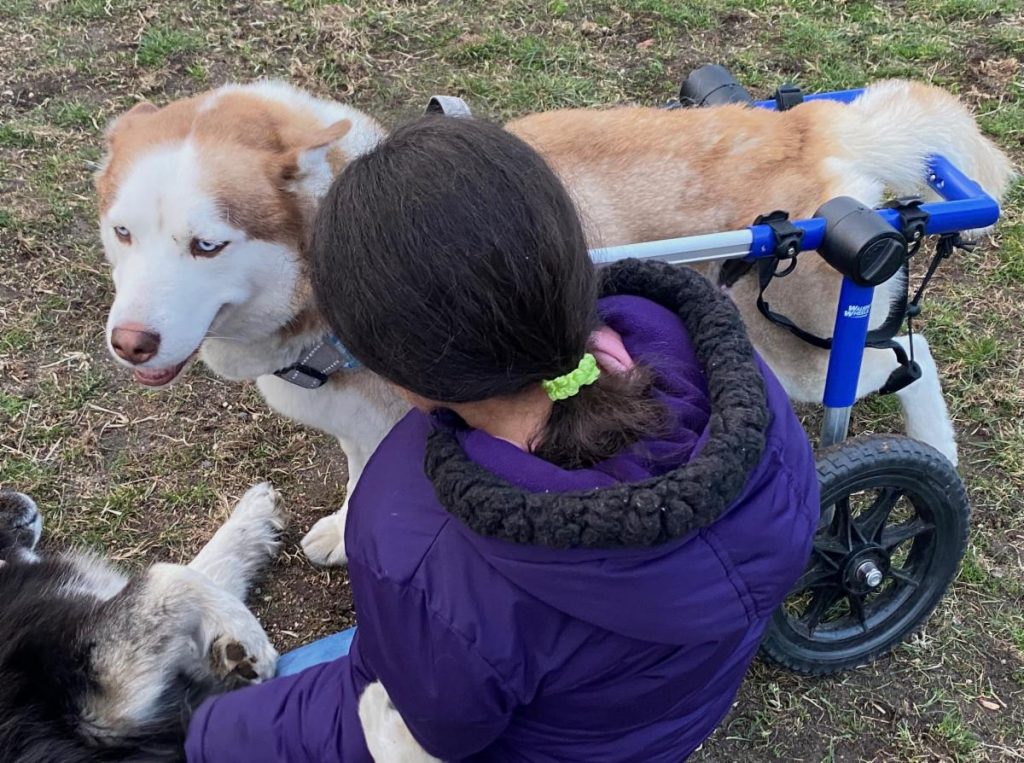
Agathor with a new young fan
It’s important to note that all the Resilience studies say that Staying Connected can take all sorts of different forms yet still be meaningful.
As an example…
Pre-Covid, while working on my ultimately canceled project when my editor was on extended maternity leave, I had an accountability partner (or two) for each day of the week to keep me on track.
Jane and my buddy Joe were my Tuesday people.
Without fail, if I didn’t text Jane before noon on Tuesday that I’d gotten my writing done for the day, there’d be a 12:01 reminder from her.
Even after the project collapsed, the three of us continued the practice.
Of course we had many other side conversations, but we pretty much faithfully always had a weekly check-in every Tuesday.
(And on the rare occasions when we were super busy and distracted, I had no problem texting “Happy Tuesday!” no matter what day of the week it was.)
After getting the news of Jane’s passing, Joe and I talked for a long time that night, realizing that fittingly, it was, of course, a Tuesday.
To adopt William Blake’s lines, there was a fearful––yet beautiful––symmetry to it all.
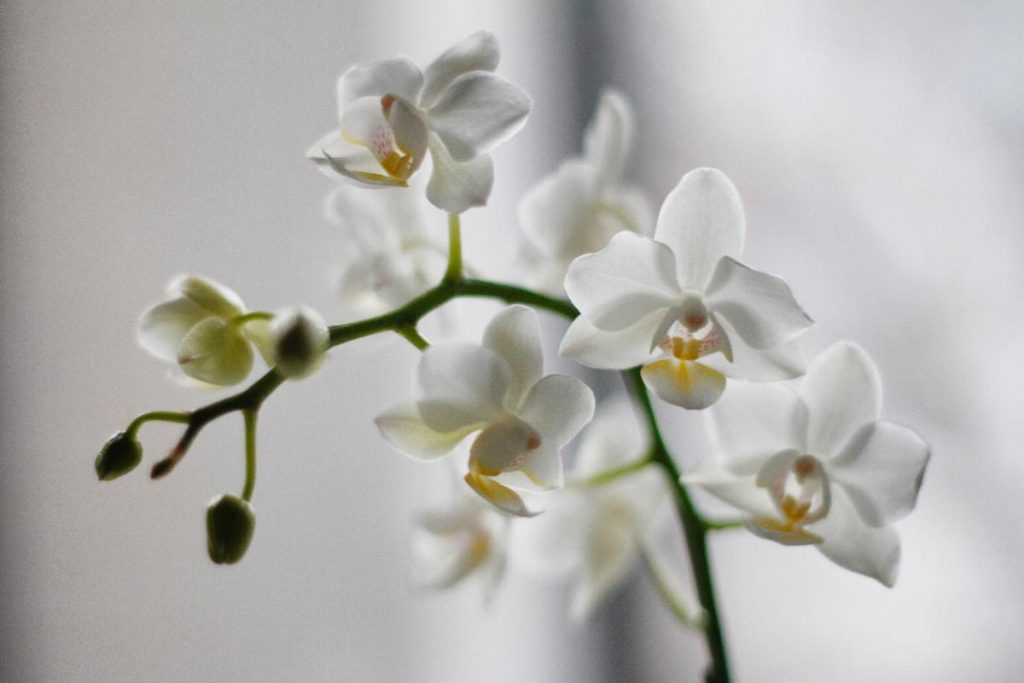
Prior to my orchids arriving today, I’ve been doing a little research on caring for them.
I admit to initially being nervous about the new responsibility because I was under the common misconception that orchids are particularly difficult to care for properly.
Instead, I’ve learned that they’re actually incredibly resilient plants.
Here’s the mistake people make:
When orchids stop blooming, many people assume that since the Show is Over, the plant is dead.
That’s actually not the case at all.
Instead, they lie dormant for six or eight months, eager to bloom again.
Jane––for all her countless quirky virtues––was NOT a particularly patient gardener.
She was constantly replacing her orchids right after they peaked.
In her memory, and as a testament to the power of resilience, I’m determined keep these going beyond their first season.
I’m reminded, as I often am in times of sorrow, of Albert Camus’ great quote:
In the depths of winter,
I finally learned that within me
there lay an invincible summer.
After these first flowers fade, apparently all I have to do is care for them as usual, and in six to eight months they’ll bloom again.
That’s right around the time, once more, that Agathor’s physical therapist says his recovery should be complete.
In this time of losses both great and small, I find that thought––that I can trust in that invincible summer; that what’s meant to bloom again, undoubtedly will––somehow very comforting.
Alongside that, it helps to remember what the astrophysicists and the poets tells us: Time is an Illusion.
Thus, it makes perfect sense to sign off today, yet again, with––
Happy Tuesday, Jane…

